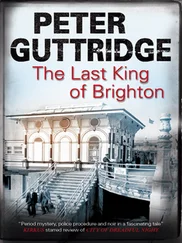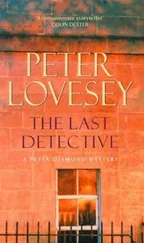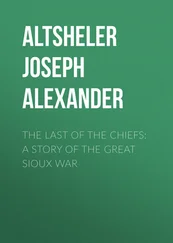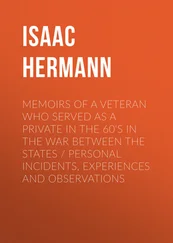1 ...8 9 10 12 13 14 ...17 Whatever the veterans’ feelings may have been, those who had come to mourn their dead evidently regarded Peace Day as worthwhile. The Victory March had no sooner passed the Cenotaph than crowds of the bereaved surged back and began laying flowers and wreaths once more. This may have been a civic nuisance, and may have aroused the fury of the Church Times, which declared that ecclesiastical buildings rather than this gimcrack secular shrine were the proper places for worship and commemoration, but the people appeared to have spoken. Because it was in essence a stage prop, the Cenotaph had not been designed to last more than a couple of weeks, but the original plan to dismantle it after ten days had to be abandoned because of public sentiment. A similar stay of execution had been granted an earlier memorial erected in Hyde Park in August 1918 to commemorate the fourth anniversary of the outbreak of war. Whatever the original intention, this huge, flag-draped Maltese Cross had become a focus for national grief, and the bereaved had made a habit of laying wreaths at its foot. Indeed, in a photograph published in the Illustrated London News of the shrine being blessed by Arthur Winnington-Ingram, the Bishop of London, it is hard to make out the shrine at all beneath the mounds of flowers. When, the following year, it was announced that the shrine would have to be demolished because of its decayed condition, there had been an outcry, even though Lutyens had been commissioned to design a more permanent replacement. Plans for a new monument had, however, been shelved when the war ended. The temporary Cenotaph now fulfilled a similar public function and the cheers had scarcely died away after Peace Day than there were calls to replace it with a permanent one made of Portland stone. The cabinet had agreed to these demands by the end of July.
None of this meant that the temporary Cenotaph could be swept away there and then, inconveniently sited though it was in the middle of a major London thoroughfare, and it would remain in place until building work began on its more solid replacement. Throughout the rest of July, people continued to lay flowers, much to the annoyance of the Board of Works, who felt that this practice should be discouraged. All men who walked past it automatically doffed their caps, and representatives of numerous organisations – including some 15,000 members of the Federation of Discharged and Demobilised Sailors and Soldiers en route to a rather more peaceful rally in Hyde Park than their previous one – continued to visit the monument and lay wreaths. There always seemed to be someone standing before it, head bowed in remembrance or recollection.
The Cenotaph also became the focus of the first anniversary of the Armistice, which attracted even larger crowds than those attending Peace Day. This was something of a surprise to the government, which, it seems, originally had no particular plan to observe the occasion. The notion of marking it with a two minutes’ silence in which the whole country would pause to remember the dead was put before the War Cabinet only on 4 November. The idea came from Sir Percy FitzPatrick, a South African author and politician, one of whose sons had been killed in action in 1917. Throughout the war a silence had been observed in South Africa at noon every day so that people could think about the sacrifices being made, and Sir Percy suggested to Viscount Milner, the Secretary of State for War, that a similar observance once a year in the mother country would be an appropriate way of ensuring that the Empire’s dead were not forgotten. The cabinet agreed, but this last-minute decision meant that the idea needed to be announced to the people quickly and forcibly. A personal request from the King that at ‘the eleventh hour of the eleventh day of the eleventh month, there may be for the brief space of two minutes a complete suspension of all our normal activities’ was placed in all the newspapers on 7 November. Most papers followed this up with a reminder to the nation on 11 November itself, which fell on a Tuesday. Ensuring that everyone stopped what they were doing at the correct and same moment was complicated, but church and other bells, factory sirens, exploding maroons and artillery fire were all used to mark the moment. Given the very short notice people had been given, and the practical difficulties of stopping industry, commerce and even traffic in their daily round, it is remarkable how widely the silence was observed. There was no service at the Cenotaph, as there is today, but the King and Queen had sent wreaths and the British and French Prime Ministers arrived shortly before 11 a.m. to lay their own tributes. Equally, there was no parade or march-past by veterans: unlike on Peace Day, the focus of the first anniversary of the Armistice was bereaved civilians. As the maroons went off, silence fell over the vast crowd of men, women and children. Men removed their hats, women bowed their heads, soldiers stood to attention and saluted. As The Times eloquently put it: ‘the very pulse of time stood still’.
A national day of mourning seemed appropriate: there were, after all, a great many people to mourn. British Empire losses – those who were killed or missing, presumed dead – stood at a staggering 1,104,890. Frustrating as it must have been for those still in uniform long after the end of hostilities, there were many soldiers who never came back at all, since the government had decreed that the bodies of those killed in action would not be returned to Britain for burial. This would have been impractical while the war was still being fought, but the real reason behind the decision was that in the interests of national unity it was important that all the dead should be treated equally. The practice that had obtained after Waterloo, when officers’ bodies were shipped home while other ranks were shovelled into unmarked mass graves, clearly wouldn’t do in the present circumstances. While wealthier families might have been able to make private arrangements for their dead to be brought home, many of those whose husbands, fathers, brothers and sons had been killed would have been hard pushed to find the money for a funeral in peacetime, let alone to pay for a body to be transported across the Channel or from other even more distant theatres of war. Soldiers would therefore lie with their comrades where they had died.
This noble-sounding idea was not always matched by the circumstances in which ‘the Fallen’ were dealt with during the war. Some of the dead, uncoffined and with blankets serving as shrouds, were buried in civilian cemeteries, but by early 1915 it was already clear that the scale of the casualties was such that land would have to be acquired to create new military cemeteries. In the meantime, burials took place where possible behind the lines. These may often have lacked individuality, with several bodies laid together in specially dug trenches, but they were dignified affairs with a proper religious service conducted by a padre and attended by soldiers from the same company of the deceased. Given the chaos of battle, however, and the difficulty of bringing in the dead under fire, many soldiers were quite literally buried where they fell. Even when a soldier was identifiable, and had died recently and comparatively ‘cleanly’, burials in the field could be hurried and basic affairs, with bodies tipped into convenient shell holes and covered with a few shovelfuls of earth or mud while someone said a brief prayer. Personal effects would be placed in marked bags to be returned in due course to relatives, and the man’s tin helmet would be hung on a bayonet or on a rifle thrust into the ground, barrel first. Where there was no rifle or bayonet, a bottle containing a piece of paper inscribed with identifying details of the dead soldier would be stuck in the ground. In some places burial parties had time to use bits of wood and wire to fashion crude crosses.
Читать дальше












